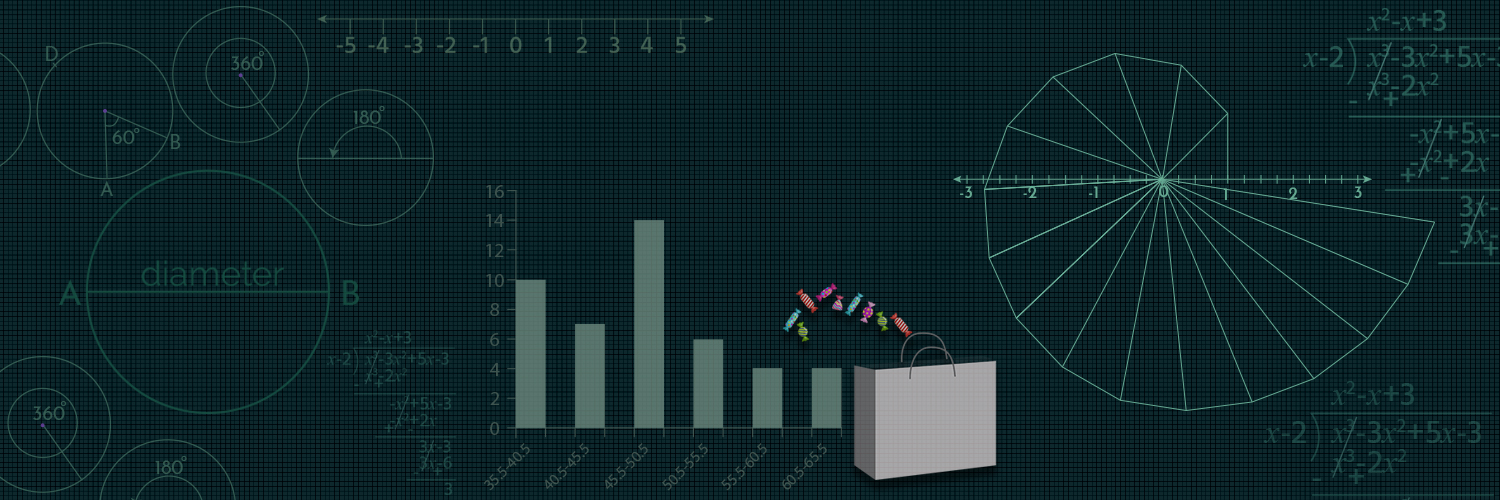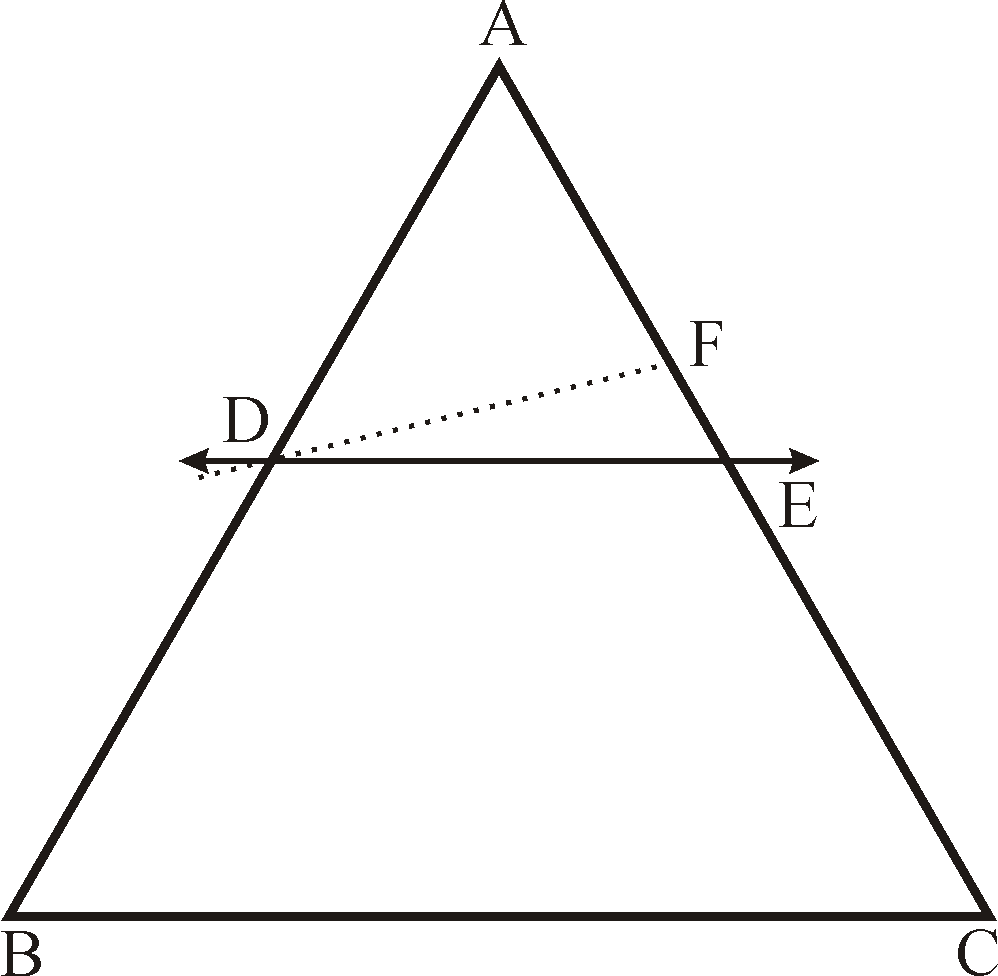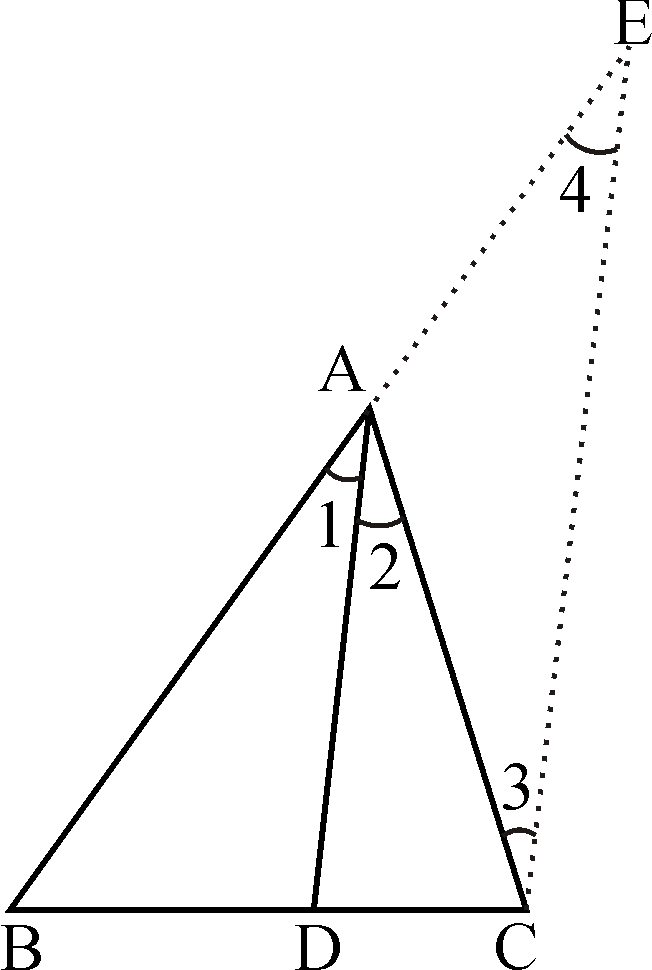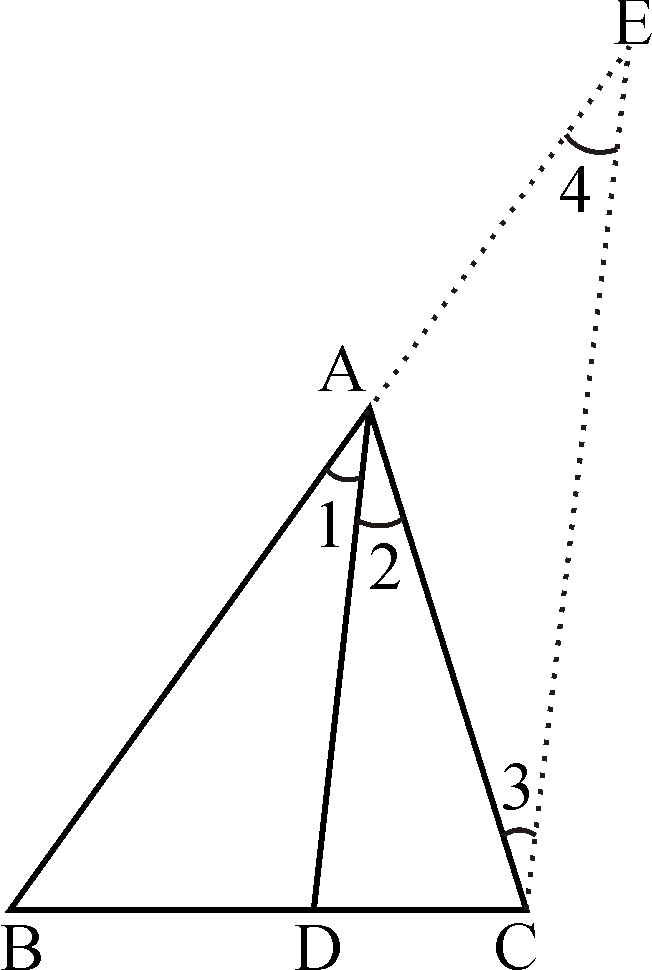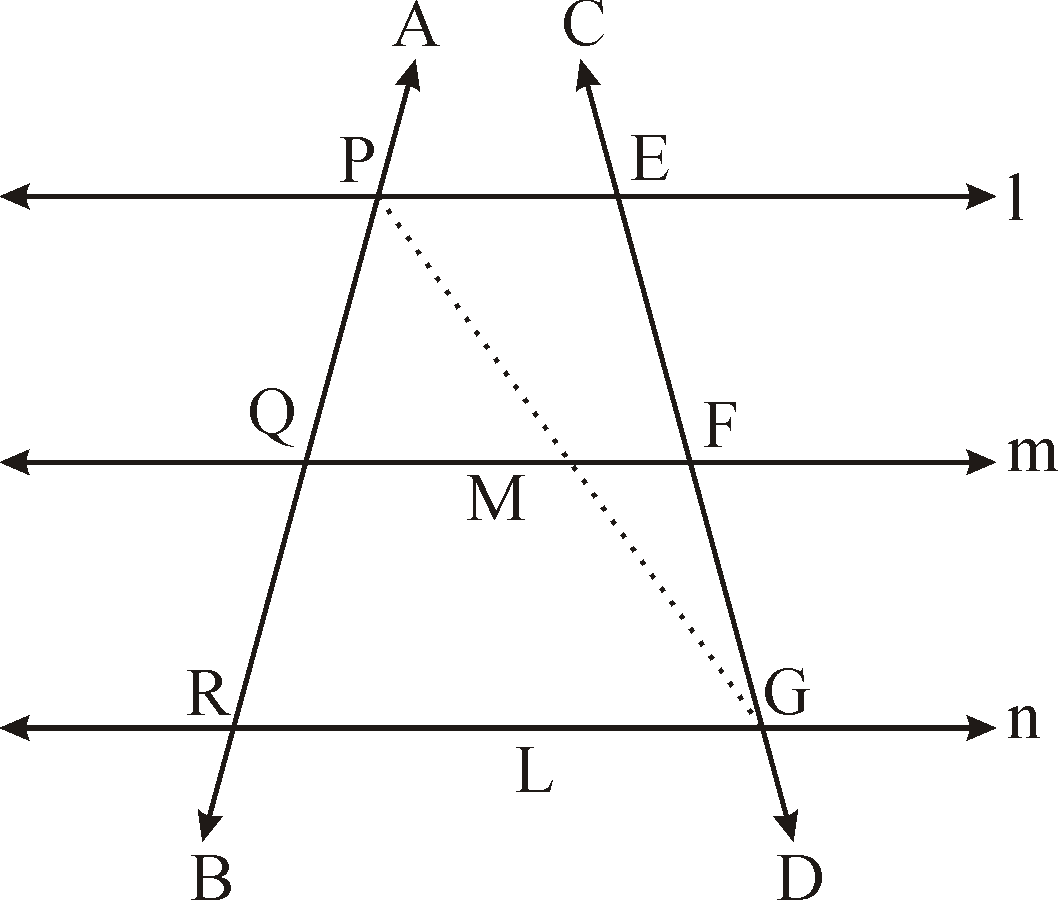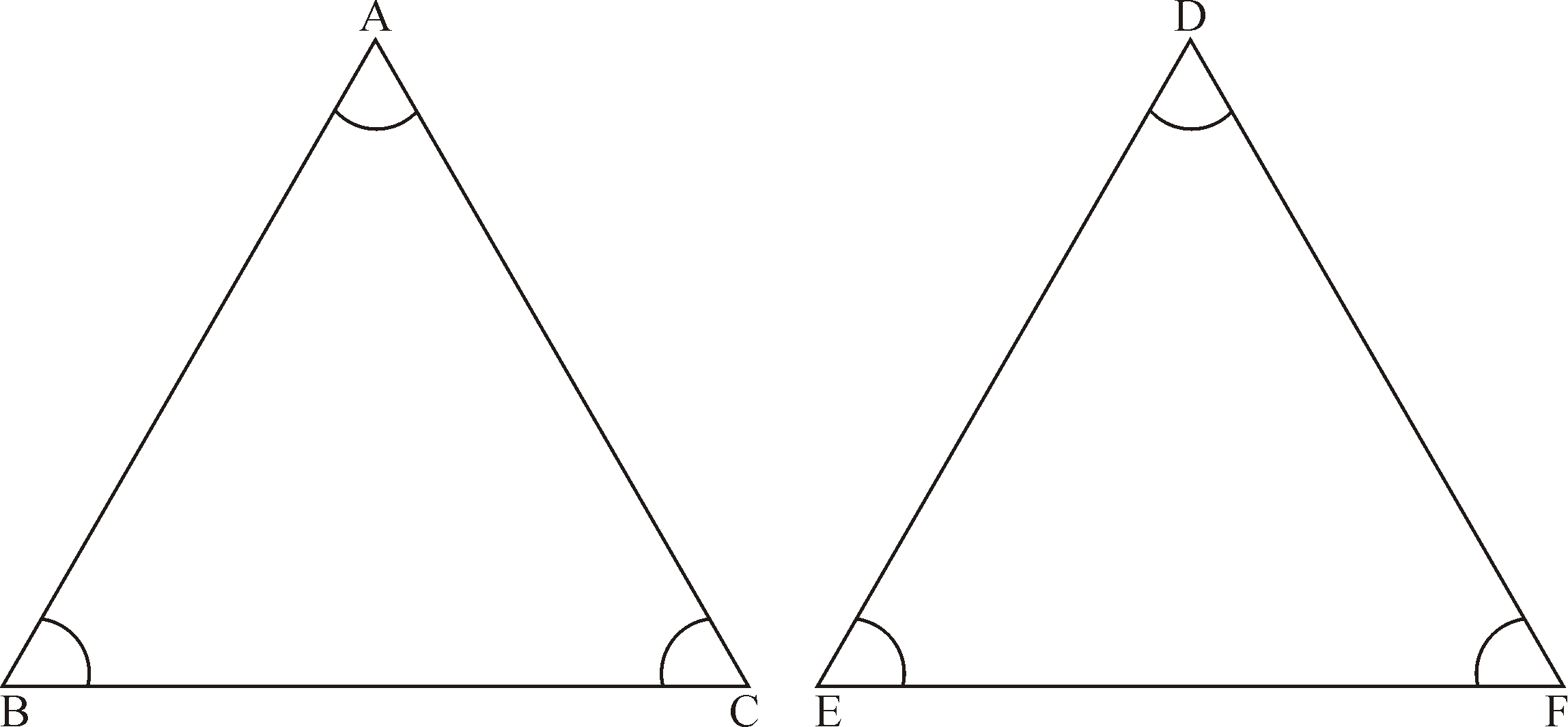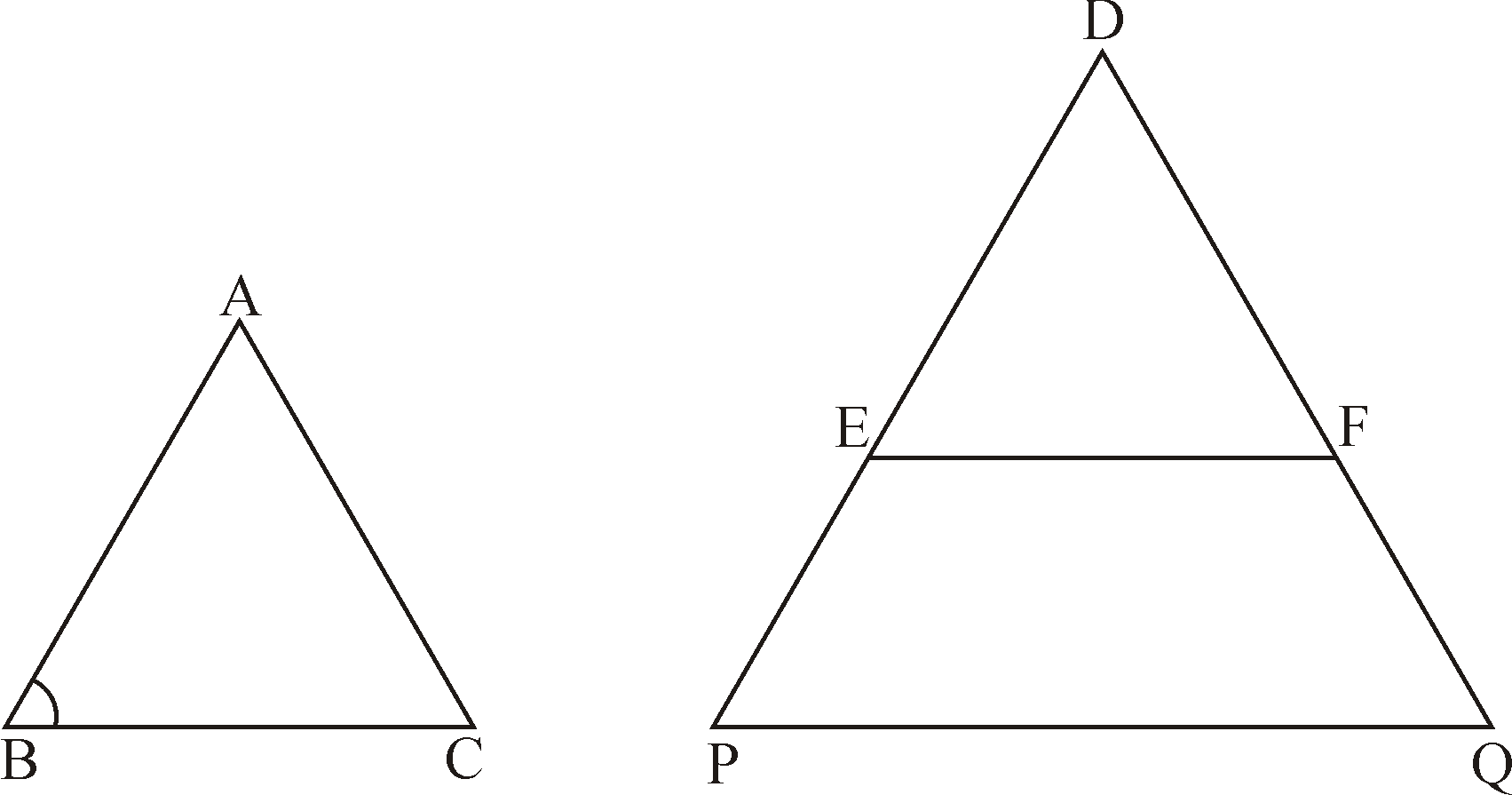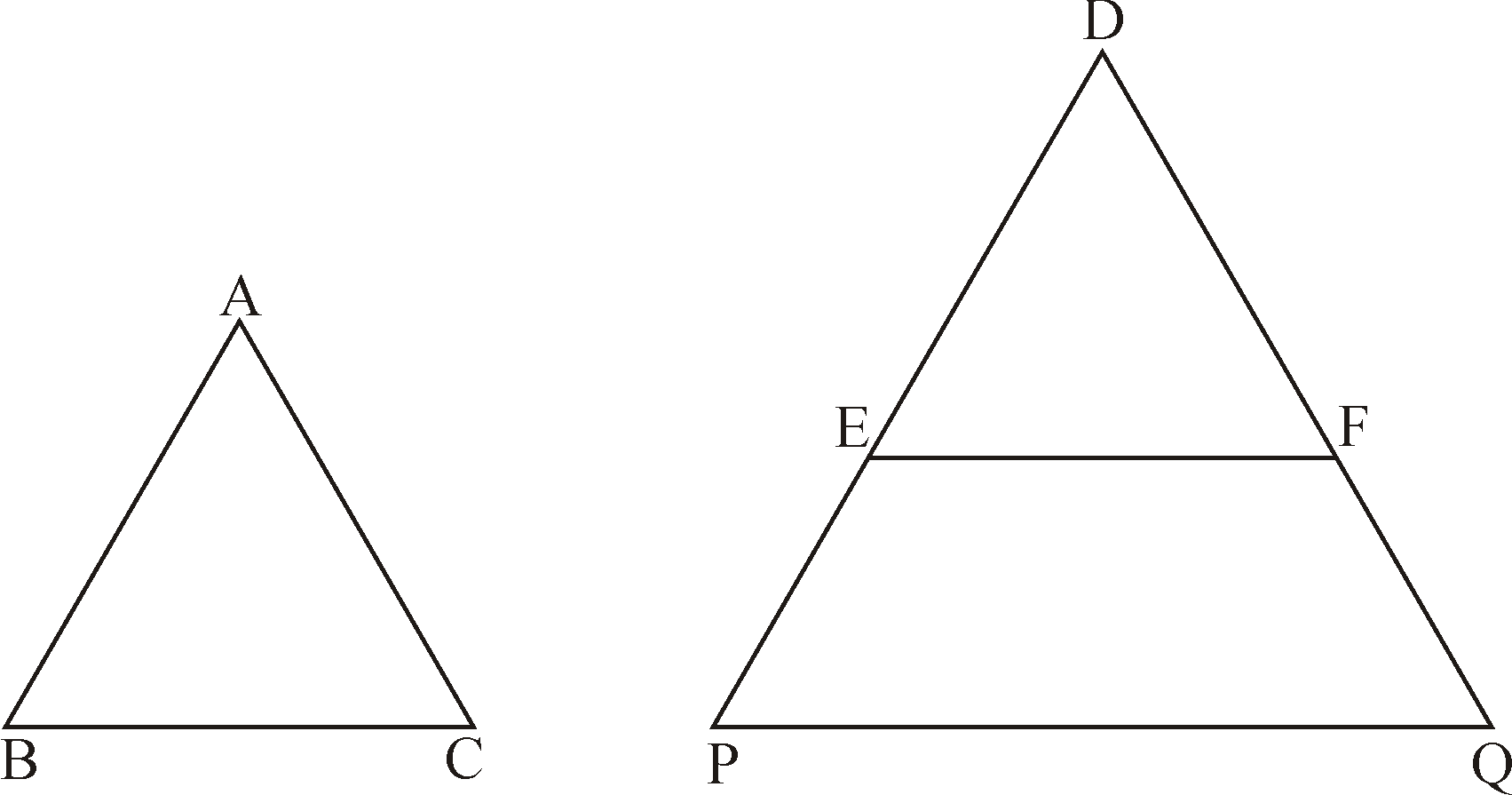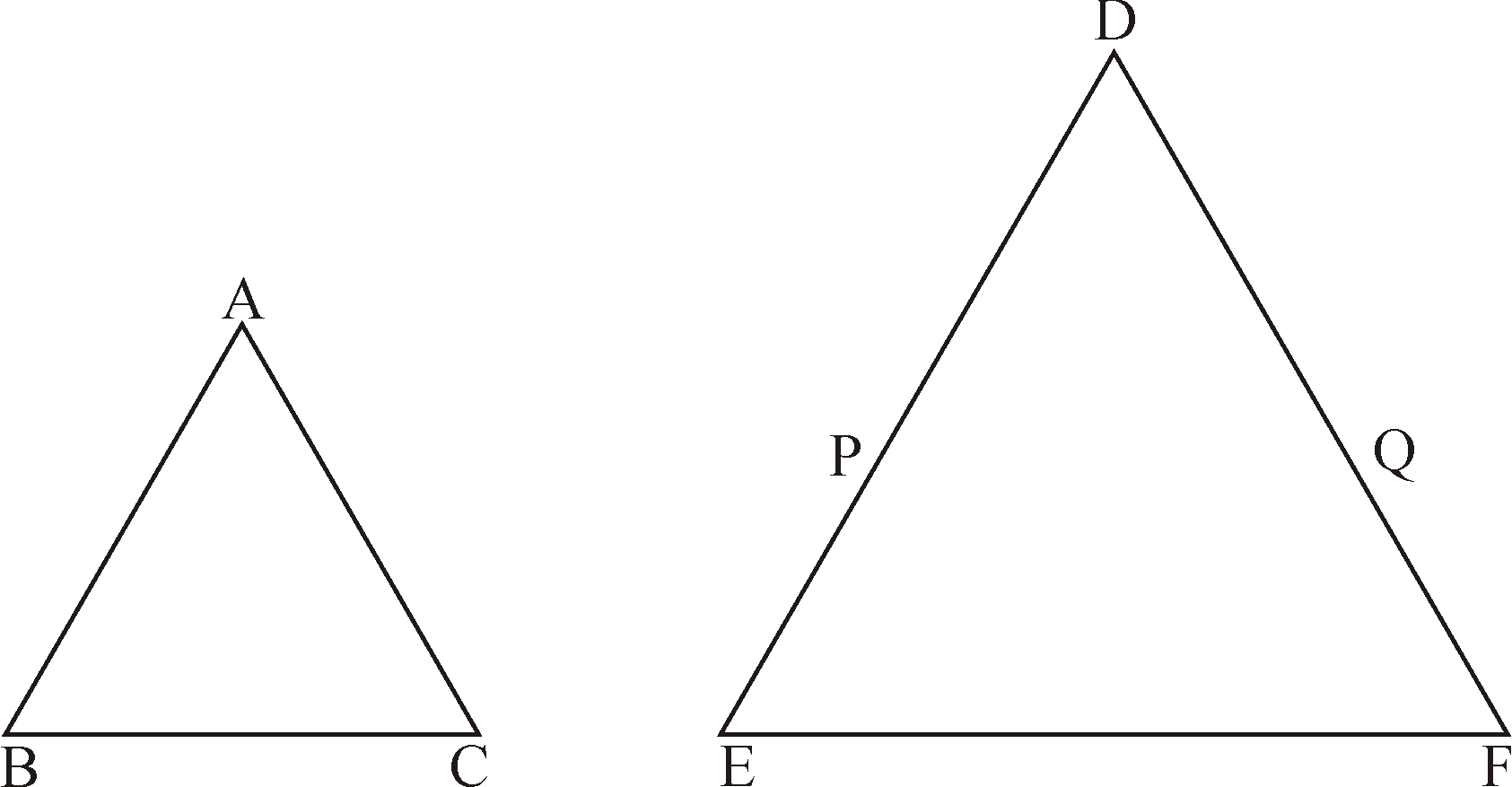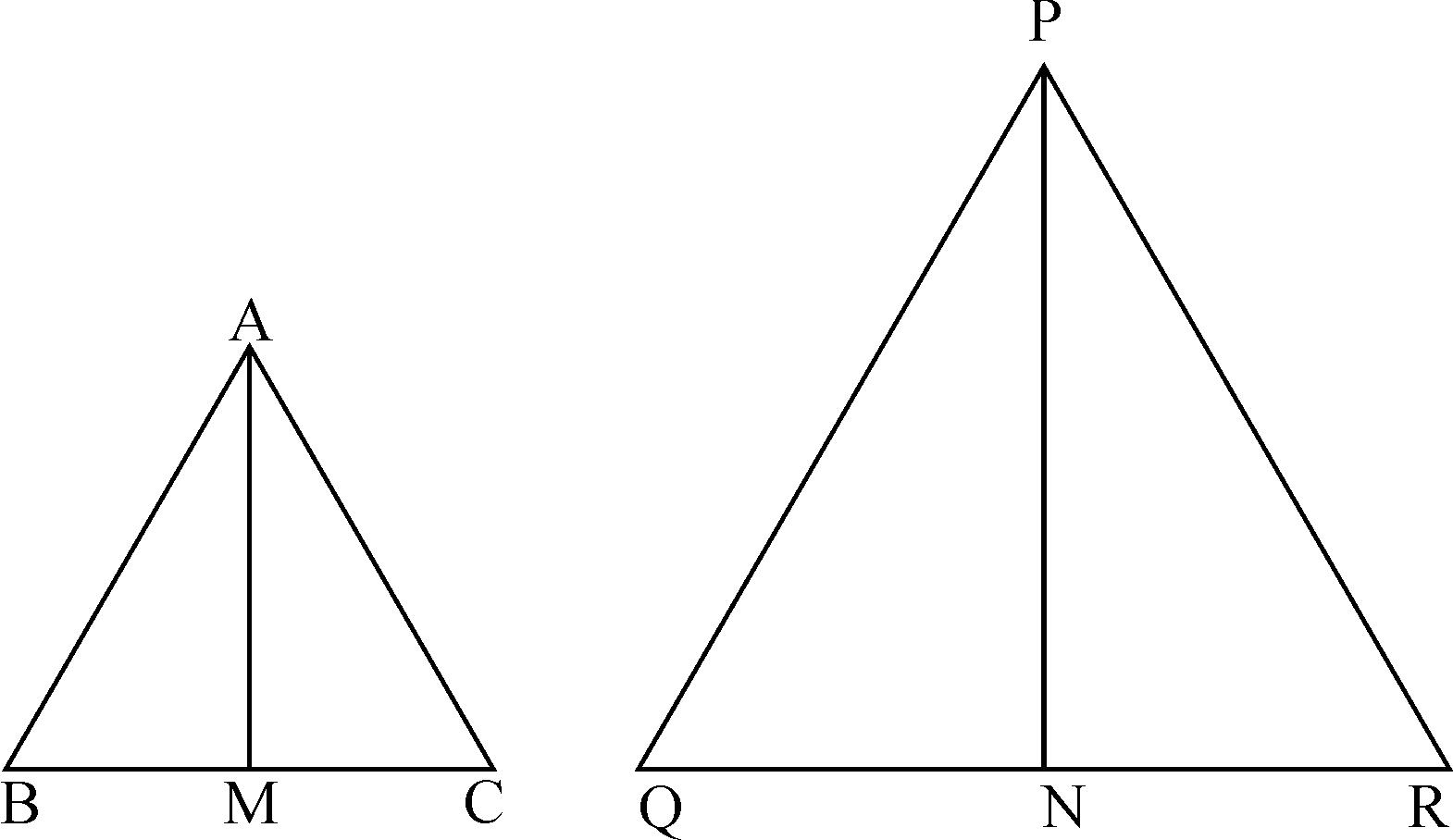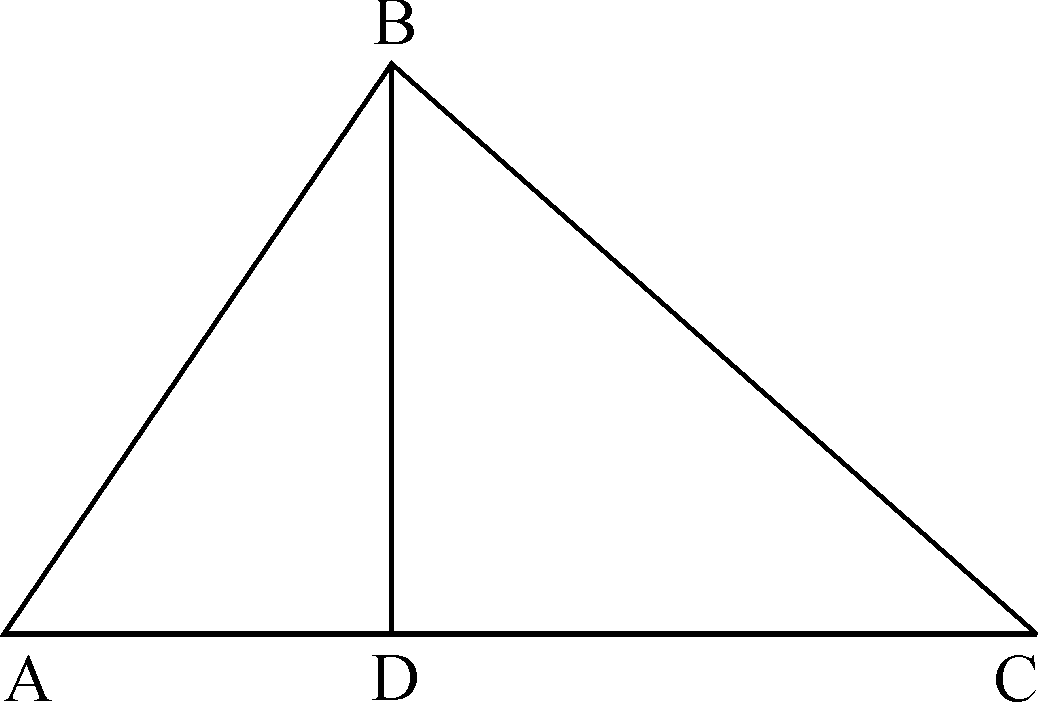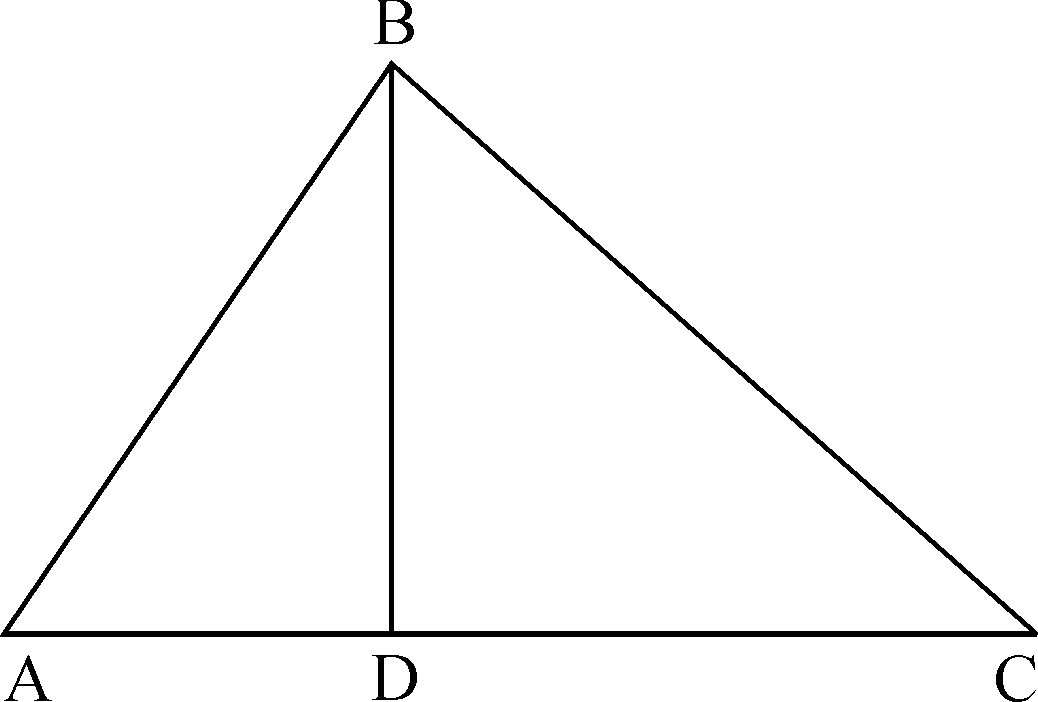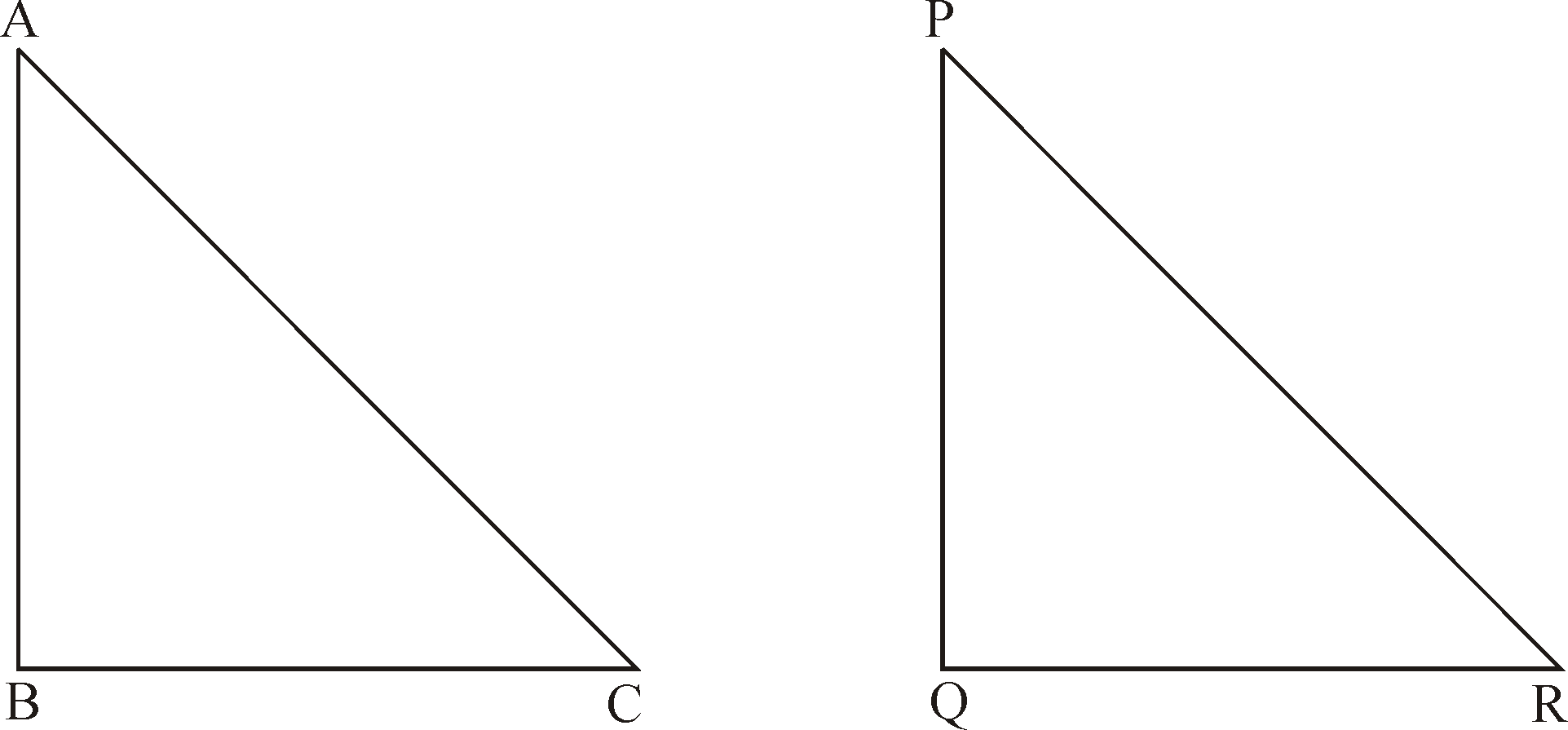Similarity:
Two figures are similar if their shapes are same but size may not be the same.
e.g Tajmahal and model of Tajmahal
Similarity of triangles:
Two triangles Δ ABC and Δ PQR are similar
If 1) Their corresponding angles are equal i.e
2) Their corresponding sides are in proportion i.e.
Theorem 1:Basic proportionality Theorem:(Thale’s Theorem)
If a line is drawn parallel to one side of triangle intersecting the other two sides, then
it divides the two sides in the same ratio.
Given: A triangle ABC in which
, and DE intersects AB at D and AC at E.
THEOREM 2:(Converse of Basic Proportionality Theorem)
If a line divides any two sides of a triangle in the same ratio, then the line must be
Parallel to the third side.
From (i) and (ii), we get
THEOREM 3(Angle bisector theorem):
The internal bisector of an angle of a triangle divides the opposite side internally in
the ratio of the sides containing the angle.
From (i) and (ii), we get
THEOREM 4(Converse of angle bisector theorem):
CONSTRUCTION :Produce BA to E such that AE = AC. Join EC
THEOREM 5:
If three or more parallel lines are intersected by two transversals, prove that the
intercepts made by them on the transversals are proportional.
GIVEN:Three parallel lines l, m, n which are cut by the transversals AB and CD at P, Q, R and E, F, G respectively.
Criteria for similarities of triangles:
THEOREM6:(AAA Similarity Criterion):
If two triangles are equiangular, then they are similar.
PROOF: We can have AB=DE,,AB>DE,AB<DE
Take a point P on the line DE and Q on the line DF such that AB = DP and AC = DQ.
Join PQ.
Similarly, we can prove that
Take a point P on the line DE produced and Q on the line DF produced
so that DP = AB and DQ = AC.
Join PQ.
Similarly, we can prove that
THEOREM 7: (SSS Similarity Criterion)
If the corresponding sides of two triangles are proportional, then they are similar.
CONSTRUCTION:Let P and Q be points on DE and DF respectively
such that DP = AB and DQ = AC.
Join PQ.
Thus, in triangles DPQ and DEF, we have
From (i) and (ii), we have
THEOREM 8(SAS similarity Criterion):
If in two triangles, one pair of corresponding sides are proportional and the
included angles are equal then the two triangles are similar.
CONSTRUCTION: Take points P and Q on DE and DF respectively,so that
DP = AB and DQ = AC. Join PQ.
…(ii), (by AAA-criterion of similarity)
From (i) and (ii), we get
Areas of similar triangles:
Theorem 9:
The ratio of areas of two similar triangles is equal to the square of the ratio of their
Corresponding sides
Given: Triangle ABC is similar to triangle PQR.
…. (i)
Similarly we can show for other side too.
Theorem 10:Theorem of three right angles triangles
If a perpendicular is drawn from the vertex of the right angle of a right angle
triangle to the hypotenuse then triangles on both sides of perpendicular are
similar to the whole triangle and each other.
Theorem 11: Pythagoras theorem:
In a right angle triangle,the square of the hypotenuse is equal to the sum of
squares of other two sides.
Theorem 12: Converse of Pythagoras theorem:
In a triangle, if square of one side is equal to the sum of squares of other two
sides, then the angle opposite the first side is a right angle.
Proof: In PQR we can apply Pythagoras theorem
So AC = PR (from 1 and 2)
